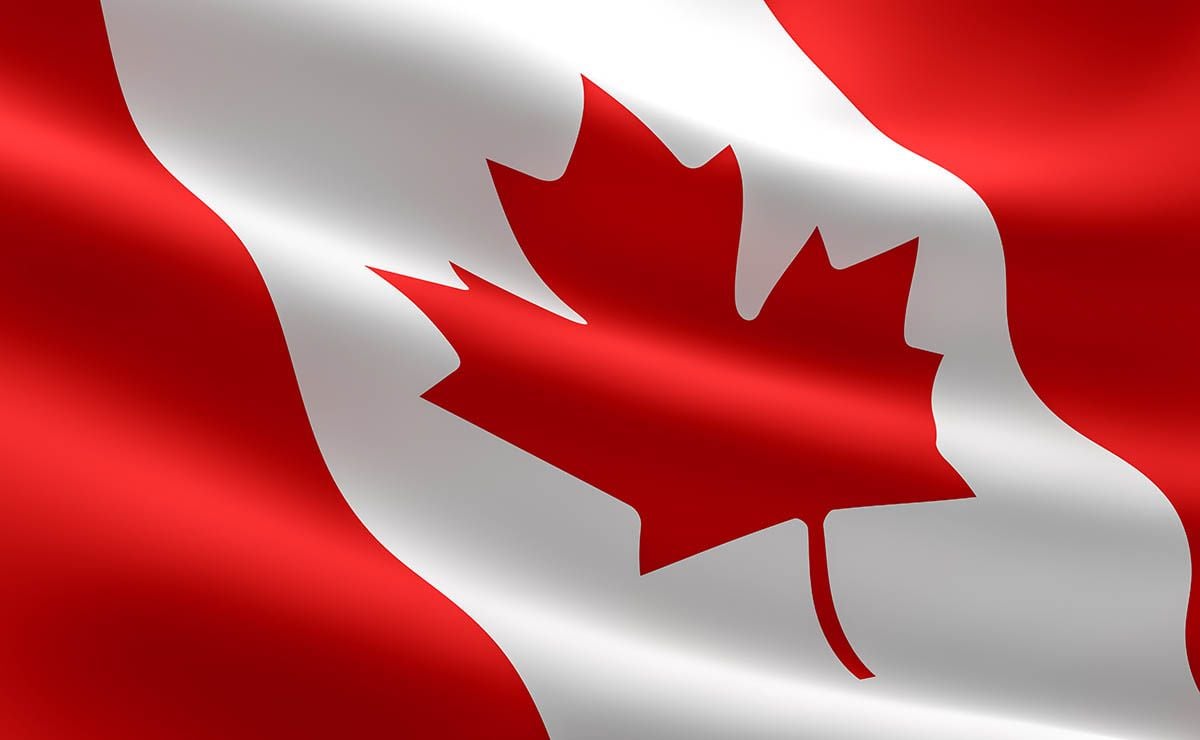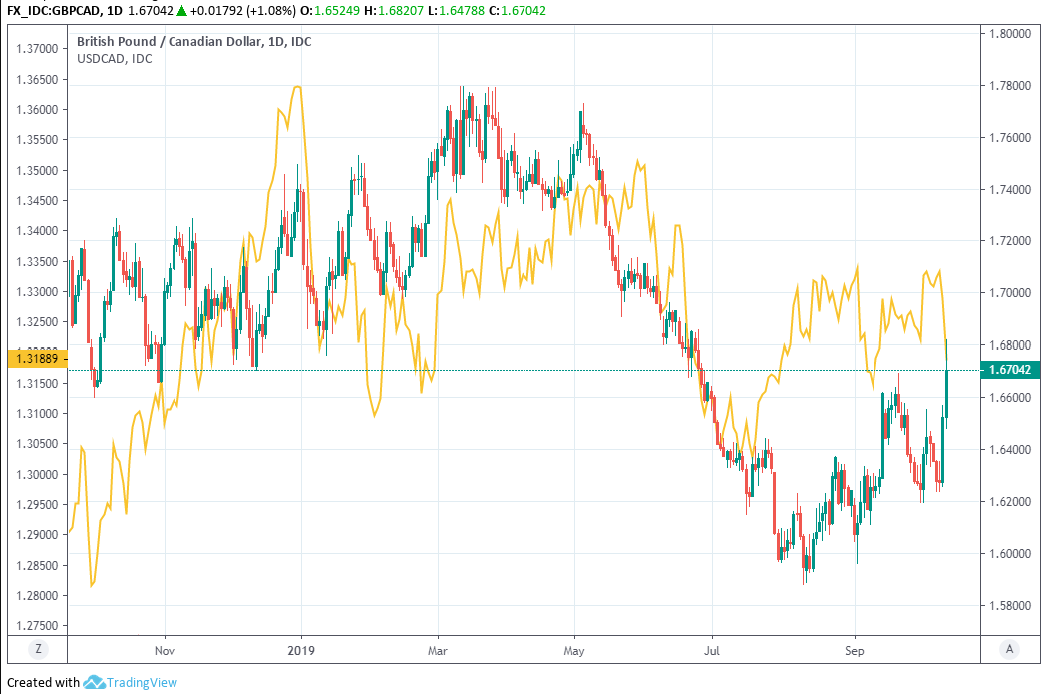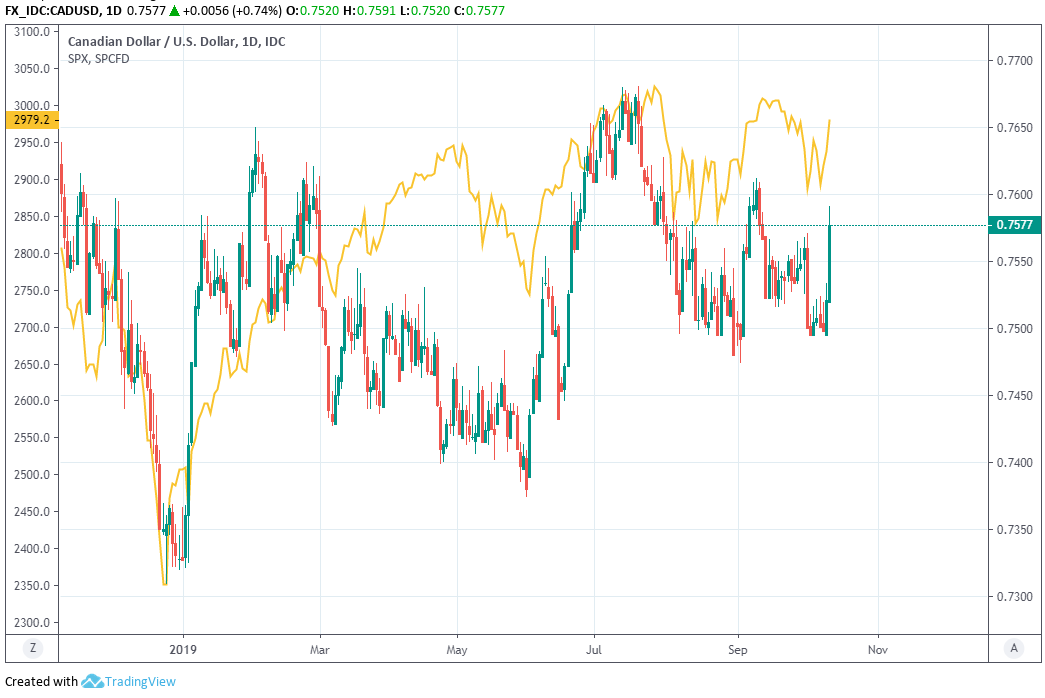The Canadian Dollar Rises as Global Winds Abate
- Written by: James Skinner

Image © Adobe Stock
- CAD in decisive reversal higher as icy global winds abate.
- Prospect of deals on trade war and Brexit see winds fade.
- Oil offers support after attack on an Iranian tanker in gulf.
- Blowout jobs data lights fire under CAD exchange rates.
- Bets on BoC cut may fade amid trade truce, strong economy.
The Canadian Dollar was lifted sharply and potentially saved from a trend reversal Friday amid series of favourable developments, some of which have driven an abatement of the icy winds blowing into Canada from overseas, with possible implications for the Bank of Canada (BoC).
Canada's Dollar entered the final session of the week on its front foot after reports of an Iranian tanker being hit by rockets in the Gulf lifted the oil price, but the Loonie was later aided by speculation the U.S. and China would strike a deal that puts the trade war on hold, as well as fresh signs of progress in the Brexit saga. The mere prospect of a truce in the tariff fight lifted the S&P 500, which the Loonie has tracked closely for months now, by more than 1% and a blowout jobs report did the rest.
Roaring stocks drove a near 100 point decline in the USD/CAD rate although this wasn't enough to prevent the Pound-to-Canadian-Dollar rate from rising more than 1% itself as Sterling celebrated fresh claims in Westminster and Brussels that a Brexit deal could be reached within weeks. Hopes of a deal that closes the current chapter in the Brexit saga made Pound Sterling the best performing major currency of the week, but it's vulnerable to disappointment.

Above: Pound-to-Canadian-Dollar rate shown at daily intervals alongside USD/CAD (yellow line, left axis).
"Dollar/CAD is collapsing lower this morning after Canada released a blowout employment report," says Eric Bregar, head of FX strategy at Exchange Bank of Canada. "We would say that the surge Brexit and US/China “deal optimism” over the last 24hrs, starting with yesterday’s buyer failure above the 1.3330s, was a negative precursor to this. We also think yesterday’s bearish outside day pattern on the USDCAD chart was a negative omen."
Canada set itself apart from the crowd again Friday when the unemployment rate posted a surprise fall from 5.7% to 5.5% and the economy was revealed to have created a blowout 53.7k new jobs during September, when the markets were said to be looking for only an 11.2k increase. That could draw attention from the Bank of Canada because it might mean wages, which rose 4.3% on an annualised basis last month, continue to strengthen and faster pay growth makes central banks fearful of inflation.
The Bank of Canada already projects inflation will remain around the 2% target over the coming years and is widely seen as only having paused its rate hiking cycle because of concerns over what things like the trade war and Brexit could mean for the economy. With the Federal Reserve (Fed) having cut rates twice this year, markets are betting the BoC will follow suit within the next year but investors may have to reconsider that assumption after Friday's developments.

Above: CAD/USD rate shown at daily intervals alongside S&P500 (yellow line, left axis).
"The market is pricing just one rate cut over the next twelve months and we agree with that prognosis given the Bank of Canada didn’t raise interest rates as aggressively as the Federal Reserve over the past couple of years. However, we think the BoC rate cut will come sooner than September 2020 as futures contracts imply given the growth concerns, although our December 2019 prediction is looking a little shaky after today’s jobs numbers," says James Knightley, chief international economist at ING.
Canada's economy grew at an annualised pace of 3.7% in the second quarter, its fastest in years, which allowed the BoC to leave its interest rate unchanged at 1.75% even as the Federal Reserve across the border, signalled a pause in its hiking cycle and eventually began cutting. But the bank also says that second quarter strength in the economy was temporary and has repeatedly warned that a global slowdown linked to the trade war will hit Canada sooner or later.
Talks between the U.S. and China in Washington are expected to produce an agreement that averts two tariff increases planned for October 15 and December 15, which will otherwise see all of China's U.S.-bound exports subjected to punitive duties. Avoiding an escalation in the 18-month tariff fight could provide the global economy respite from disruptions to international trade and Canada insulation from the slowdown. And lesser risks emanating from Europe, due to a possible Brexit deal, may also be viewed positively by the BoC and markets as far as the Canadian interest rate outlook goes.
"Today's data helps to reassert that the BOC's more patient approach to policy has been prudent," says Mazen Issa, a strategist at TD Securities. "The market may be hesitant to break out of the 1.3150/3350 range in USDCAD, but we think positive risk sentiment should help it test the lower bound. We are biased to CAD outperformance vs. AUD and NZD as the CAD is the better dollar."
Time to move your money? Get 3-5% more currency than your bank would offer by using the services of a specialist foreign exchange specialist. A payments provider can deliver you an exchange rate closer to the real market rate than your bank would, thereby saving you substantial quantities of currency. Find out more here.
* Advertisement




